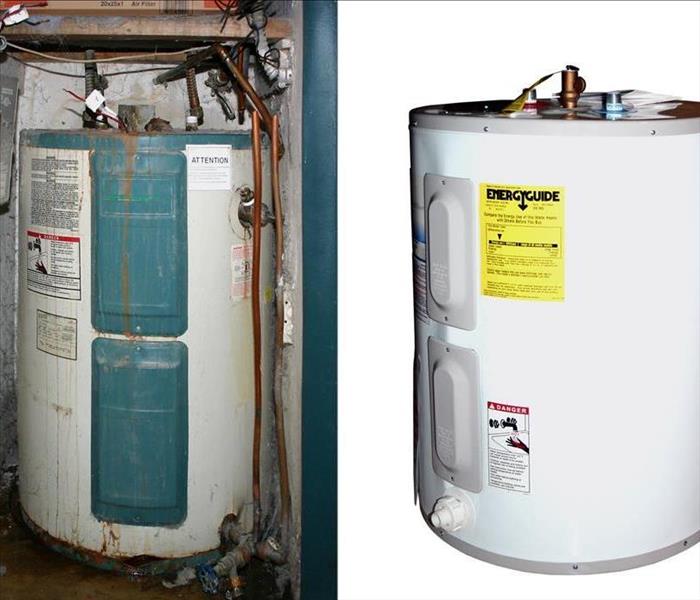3 Steps for Responding to a Broken Water Heater
10/16/2019 (Permalink)
A leaking water heater may be one of the most inconvenient causes of water damage in your Sebastian, FL, home. After all, you use hot water from the moment you wake up until you wash the final dinner dish at night. A failed or broken water heater can disrupt your entire schedule, even without the resulting flooding.
Gallons of Water
Unfortunately, a broken water heater generally does lead to flooding. When those gallons of water rush into your home, whether it's in a basement or the main level of the home, there's going to be a bit of damage:
- Waterlogged belongings
- Weakened building materials
- Mold growth
- Unpleasant odors
- Spotting and stains
- Early deterioration of materials
The good news is that there are steps you can take to minimize these damages.
One: Act Quickly
It doesn't take long for the water from the leaking water heater to spread and soak into the surrounding area. The sooner you can shut off the water, stop the flooding, and dry out the room, the better. When the water is gone, you can recognize potential hazards and obstacles to recovering.
Two: Contact Professionals
Some types of water damage are covered by home insurance policies and others aren't. It's best to talk to your insurance agent to know whether the damages to your home will be covered by your policy. You should also contact a professional water remediation agency to remove large amounts of water or contaminated water, determine the extent of the damage, provide thorough drying services, prevent mold growth, and sanitize the area.
Three: Repair and Reconstruct
A failed water heater sends many gallons of water into the surrounding area in a short space of time. Sadly, it takes much longer to remove the water, so it isn't unusual for homeowners to face reconstruction steps. Carpeting, drywall, window treatments, and even the surrounding plumbing and electrical work may need to be replaced.






 24/7 Emergency Service
24/7 Emergency Service
